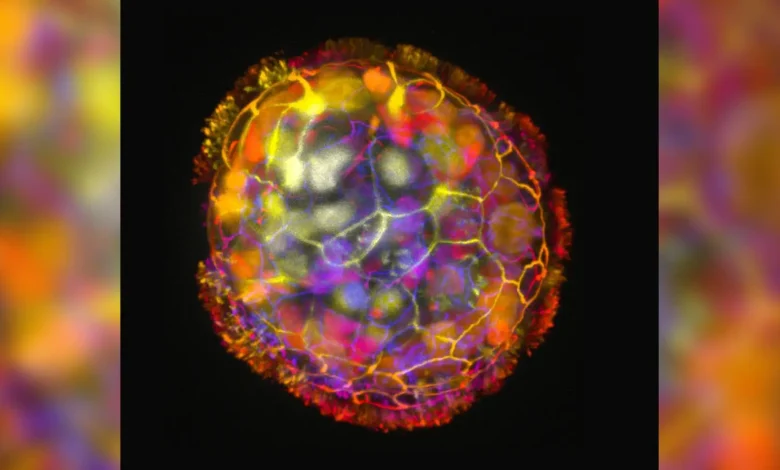Developing very small robots made of human cells

Scientists have created small live robots from human cells that can move in a lab dish, and may help in the future by healing damaged wounds or tissues, according to a new study published in the Journal of Advanced Science.
The discoveries were called “robots” by a team from Tufts University and the Weiss Institute at Harvard University. The research was initiated by previous work involving some of the scientists involved in this study who made the first live robots, or “xenobots”, from stem cells originating in African frog foetuses (Xenopus laevis).
“Some people thought that the features of xenobots depended a lot on the fact that they were embryonic and amphibious,” said study author Michael Levine, a professor of biology at Vanevar Bush University at Tufts School of Arts and Sciences.
“I don’t think this has anything to do with being an embryo, or a frog, I think this is a more general characteristic of living organisms,” he continued, adding, “We don’t realize all the competencies that our body cells have.”
While alive, Levin explained, robots were not fully developed organisms because they did not have a full life cycle, noting that it “reminds us of these harsh binary categories that we dealt with: is this a robot, is this an animal, is this a machine? These kinds of things don’t serve us well. We need to get through that. ”
How did you make?
Scientists used adult human cells from the trachea for anonymous donors of different ages and sex. Study co-author Gizim Gumuskaya, a PhD student at Tufts University, said researchers focused on this type of cell because it is relatively easy to access because of work on coronavirus, lung disease and, most importantly, because of the advantage that scientists believe makes cells mobile.
Tracheal cells were covered with hair-like bumps called cilia, rippling back and forth. They usually help tracheal cells push small particles that find their way into the airways of the lungs. Previous studies have also shown that cells may form organoids, blocks of cells that are widely used in research.
Gumuskaya experimented with the chemical composition of tracheal cell growth conditions, and found a way to encourage cilia to head outward on organic organs and once they found the right matrix, organoids became mobile a few days later, as cilia operated more or less like oars.
“Nothing happened on the first, second, fourth or fifth day, but as biology usually does, around the seventh day, there was a rapid shift,” she said.
She explained: “It was like an open flower by the seventh day, the caves flipped and became outside.”
“According to the way we adopt it, every robot grows from one cell.”
This self-assembly is what makes it unique and Levine said that biological robots were made by other scientists, but were manually manufactured by making a mold and seed cells to live on top of them.
Different shapes and sizes
The robots created by the team were not identical, as some were spherical in shape and fully covered in crops While others are soccer-shaped and irregularly covered in etiquette, they have also moved in different ways, Some in straight lines, others in tight circles, while others sat and shook According to a press release about the study, she survived for up to 60 days in laboratory conditions.
Levine and Gumuskaya explained that the experiments described in the latter study were still at an early stage, but the aim was to find out whether such robots could have medical applications. To find out whether such applications were possible, the researchers examined the ability of robots to move over human neurons implanted in a laboratory dish that was “scratched” to mimic damage.
The study noted that researchers were surprised to see robots multiply in the area affected by neurons, although they did not yet understand the healing mechanism.
Falk Tauber, group leader at the Freiburg Center for Interactive Materials and Biotechnology at the University of Freiburg, Germany, said the study provided a basis for future efforts to use biobots in different functions and manufacture them in different forms.
The uninvolved Tauber noted that the robots showed “amazing behavior,” especially when they moved through scratches in human neurons and eventually shut them down.
The ability to create such structures from the patient’s own cells indicated diverse applications both in the laboratory and possibly in humans.
Levin said he did not believe the robots had any ethical or safety concerns, adding that they were not made of human embryos, explaining that “they have a very restrictive environment to grow in, so there is no possibility that they will come out of them or live outside the lab.”
“She cannot live outside that very specific environment, she has a normal lifetime, so after a few weeks, she biodegrades seamlessly,” he concluded.





